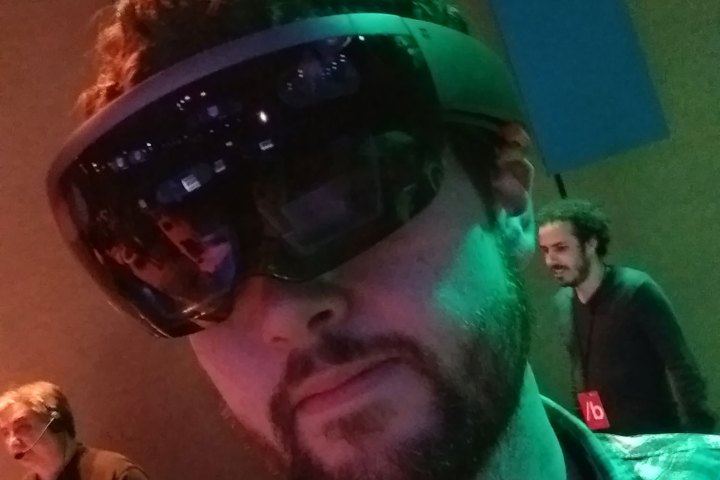
Unlike the HTC Vive and Oculus Rift, Microsoft’s HoloLens mixes virtual with physical by presenting holograms in the wearer’s field of view of the real world, whether it is a hologram of a human body with the meat exposed, a 3D representation of a city, the Martian landscape, or a handful of Yu-Gi-Oh! cards floating in the air. Users can walk around and interact with these virtual objects/landscapes to some degree in the real world.
Right now, there is no consumer version of HoloLens, as the company is not sure when the device and its ecosystem will be ready for the masses. Microsoft originally hinted that a consumer model might not even happen, but the growing popularity of the AR headset and what we have seen thus far indicates that there will eventually be a platform accessible by everyone. Heck, anyone can purchase the headset now if they have an extra $3,000 in their pocket.
According to Microsoft, Windows Holographic will be baked into Windows 10 in 2017. This will be a platform for providing mixed reality experiences to all customers through the new operating system and head-mounted displays like HoloLens. These experiences will be based on Microsoft’s Universal Windows Platform that enables apps to run on any Windows 10 device no matter the underlying hardware.
HoloLens was first revealed by Microsoft in January 2015 followed by availability to developers and companies in the United States and Canada at the end of March 2016. After that, Microsoft basically opened the HoloLens doors to everyone in these two territories at the beginning of August. HoloLens is currently served up as a $3,000 Development Edition and a $5,000 Commercial Suite Edition for businesses.
“When we set out to pioneer the mixed-reality category, we knew that many of the best innovations would be discovered when others got their hands on the technology,” said Alex Kipman, technical fellow, Microsoft Windows and Devices Group. “It has been quite inspiring to see what our partners have built and what individual developers have created. Together, we have only scratched the surface for what mixed reality can do. I can’t wait to see what happens next as we welcome these new countries to our holographic landscape.”
This is why we will not see a genuine consumer edition anytime soon: the augmented reality landscape is still forming. We are only seeing just a tidbit of what is capable with the technology, such as Lowe’s Home Improvement using HoloLens to show customers what their purchase decisions will look like in the end. NASA is using HoloLens to discover the secrets of Mars while Case Western Reserve University thinks HoloLens will someday be as common as backpacks and laptops for students.
To see what powers Microsoft’s HoloLens headset, head here. Wednesday’s announcement will only widen the HoloLens ecosystem and hopefully bring a consumer version closer to reality.
Editors' Recommendations
- Turns out Microsoft’s HoloLens 3 might not be dead after all
- HoloLens 2 will have dark mode, 5G support when it launches globally this fall
- Microsoft HoloLens 2 hands-on review: The future on your face
- Microsoft’s new HoloLens hologram tech can do language translation
- Unreal Engine 4 support for developers coming to Microsoft’s HoloLens 2 in May


